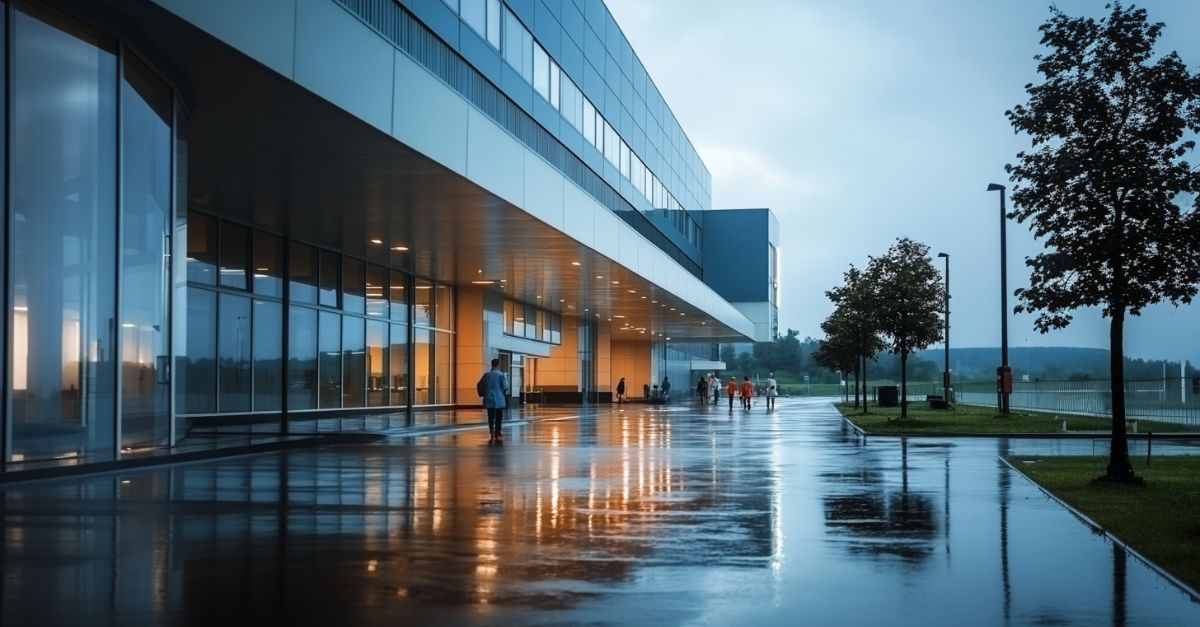Maintenance Management in Hospitals is More Than a Checklist
For healthcare facility managers and owners, compliance is non-negotiable. Without full compliance, regulations may be met but critical gaps are left in patient safety and operational efficiency. Just like proactive healthcare stops illness, proactive building maintenance stops problems before they escalate into expensive repairs.
Effective maintenance management in hospitals goes beyond just passing inspections. It ensures a safe, efficient, and resilient environment where patients heal, staff work effectively, and operations run smoothly. Your facility should be treated as a part of your care team.
The Hidden Link Between Your Facility and Patient Care
A well-kept hospital is not just about caring for the patients; caring for your building is just as important. Small issues like a leaky roof, old HVAC systems, or drafty windows can become larger problems that can directly affect patient health and safety.
How Facility Issues Impact Patient Outcomes
- Moisture Intrusion & Air Quality Risks: Unchecked leaks and poor ventilation can cause bacteria to spread and lower air quality. These issues increase infection risks for patients who are vulnerable.
- Temperature & Humidity Control: Inconsistent temperature and humidity levels affect equipment performance, medication storage, and infection prevention.
- Structural Integrity & Emergency Readiness: From storm-resistant roofing to waterproofing, a resilient facility ensures continuous patient care even during extreme weather events.
- Noise & Vibration Disruptions: Poorly maintained systems can lead to excessive noise and vibration, disrupting sleep and recovery for patients.
Proactive Hospital Maintenance Plans
Most hospital maintenance follows one of two paths:
- Reactive Maintenance – Fixing problems after they happen (higher costs, more downtime, and patient risks).
- Proactive Maintenance – Identifying risks early and preventing disruptions (lower costs, fewer compliance issues, and a safer environment).
The cost of waiting is high. Studies show that reactive maintenance costs 4-5 times more than proactive strategies. Costs are not the only concern. The risk to patient care, like canceled procedures and safety hazards, reveals the importance of proactive facility management.
Key Areas for Preventative Maintenance in Hospital Facilities
- Roofing & Waterproofing Assessments – Prevents leaks, bacteria growth, and air quality issues.
- Exterior Condition Surveys – Help identify cracks, failing sealants, facade deterioration, and structural weaknesses before they escalate.
- Planned Maintenance Programs – Puts high-risk areas first, schedules regular inspections, and optimizes budgets to reduce long-term costs.
- Project Management of Restoration & Capital Improvement Projects – Allows hospitals to modernize their facilities while maintaining continuous operations and patient safety.
Your Facility is a Partner in Care
A healthcare organization measures its success not only by medical outcomes but also by the strength of its infrastructure. A well-maintained facility reduces risk, improves efficiency, and enhances the overall patient experience.
At BECI, we focus on healthcare facility maintenance and assessments. We also offer building envelope consulting and proactive maintenance strategies. Our goal is to help hospitals prevent issues before they affect patient care.
Schedule a consultation with our team today to ensure your care facility is operating at its best.
